Not Just a Good Year for Games…
If you’ve read anything on this site lately, you know that 2023 was an incredible year for video game releases. (If you haven’t yet, check out my best of 2023 tier list.) From big-budget behemoths like The Legend of Zelda: Tears of the Kingdom and Marvel’s Spider-Man 2 to smaller, more creative works like Dave the Diver and Cocoon, every single month of last year saw multiple good-to-excellent new video games launched into the world, so much so that I still haven’t made my way through some of the most notable ones.
As fortune would have it, 2023 was also a terrific year for new movies! While I’m sure big-time comic book fans might disagree, the year had a great mix of devastating prestige dramas, heartwarming comedies, exhilarating action films, and truly inspiring animations. So, in a first for me at The Punished Backlog, here are my 10 favorite movies of 2023:
(Notable films I have not seen include: The Zone of Interest, Anatomy of a Fall, The Flash, Aquaman and the Lost Kingdom, Past Lives, All of Us Strangers, Rustin, Saltburn, American Fiction, Godzilla Minus One, The Boy and the Heron, Poor Things, Beau is Afraid)

10. Mission: Impossible – Dead Reckoning Part One
You could make the argument that the Mission: Impossible film franchise has more consistently high-quality releases than any other action series. With its never-ending gauntlet of high-octane action sequences and tense yet thrilling character interactions, Dead Reckoning continues this trend in full effect.
As with basically every other M:I release, the plot is largely nonsense: Ethan Hunt and company compete with various criminal enterprises to collect literal key fragments in an attempt to shut down a powerful artificial intelligence that has gone rogue. Much like every previous film in the series, the plot also doesn’t matter in any meaningful way beyond creating stakes.
Once I got past the fundamental ridiculousness of extremely skilled and dangerous people fighting each other tooth and nail for an actual key, what I found was a delightfully well-paced and constantly engaging popcorn flick. The variety of action on display neatly ties together the well-executed conversational moments, with some particular highlights including close-quarters combat in a narrow Venice alleyway; a tense shootout in the middle of a sandstorm; and a slow, careful climb up a train car barely hanging from a cliff.
Dead Reckoning does a great job balancing essential story and character-building elements with classic action movie fare, and stands as a high point in an already great franchise.

9. Teenage Mutant Ninja Turtles: Mutant Mayhem
Mutant Mayhem might be the biggest cinematic surprise of 2023. While I adored all things TMNT as a child (including the all-time great Super Nintendo brawler Turtles in Time), none of the film adaptations has really appealed to me much. To be honest, I’m thoroughly amazed the IP has managed to stay relevant for over 30 years.
The latest animated release presented a fresh take on the pizza-loving heroes, and not just through the gorgeous, 3D sketchbook-style animations. Apparently, all it took to amaze audiences once again was focusing on the very first word of the title: the fact that these reptilian fighters are literal children. Every single conversation these turtles have with one another in Mutant Mayhem—thanks to phenomenal voice performances from Micah Abbey; Shamon Brown, Jr.; Nicolas Cantu; and Brady Noon)—exudes joy, angst, and the kind of obnoxious yet endearing sense of humor only teenagers could convey.
The film’s main drawback lies in its pacing, as much of the backstory of the villains and ultimate showdown take up a lot of screen time in the final act yet pale in comparison quality-wise to the earlier teen hijinks that dominated the majority of the experience. Still, Mutant Mayhem is a delightful experience, one that mostly caters to fans of the turtles but also stands tall in its own right.

8. Spider-Man: Across the Spider-Verse
In an otherwise down year for Marvel releases (both in theaters and at home), Across the Spider-Verse reminded me why I fell in love with these types of characters in the first place. The sequel to 2018’s Into the Spider-Verse delightfully balances eye-popping action, clever humor, and heartbreaking character moments, often centered around the potentially fraught relationships teenagers have with their parents. It can be a bit too meme-y in big moments, but it largely manages to utilize the dozens of other Spider-Folks (and Spider-Saur apparently?) to the benefit of the plot, rather than the detriment of it.
The film’s greatest achievements lie, of course, in its stunning visuals. Many scenes involve color palettes altering in real time frame by frame to highlight different characters’ moods and expressions, while other shots intersperse different animation styles to create incredible symphonies of eye candy. But ATSV also excels in its writing and storytelling, which showcase Miles Morales’ growth as both a young man and a superhero as well as the numerous obstacles standing in his way (in particular, this notion that somebody like him “doesn’t belong” with the other heroes).
I often find myself simultaneously lamenting the declining quality of comic book movies and remaining hopeful that we can move on from the oversaturation of superheroes (and interconnected universes). That said, Across the Spider-Verse gives me hope that these classic characters and stories can still dazzle in cinematic form while breaking away from preconceived ideas and formulae.

7. John Wick: Chapter 4
The John Wick franchise has reached a particular echelon in modern cinema that films of its ilk rarely do: All of these movies are silly action movies that somehow don’t feel like silly action movies.
In what should be the final chapter of the title character’s arc, director Chad Stahelski (a former stuntman who also directed the prior John Wick movies) crafts an action flick that has all the explosions, shooting, fistfights, and intense stares one might expect, yet treats these prolonged stretches of carnage with the same level of delicacy and attention to detail you’d see in a flashy Broadway musical. Much like in classic “gun-fu” films from directors like John Woo, John Wick: Chapter 4 presents gunplay as a martial art of its own (emphasis on the art).
Since you’ve made it this far into my list, you might think I have a particular fondness for action movies, or at least films with tons of fighting and explosions. I wouldn’t disagree with this assessment, but mostly because I admire when filmmakers treat action as more than just an excuse for something “cool” to happen. Much like James Cameron, Ridley Scott, Steven Spielberg, and countless others before him, Stahelski recognizes that crafting a successful action scene involves more than just gunfire and broken bones; it requires a full artistic vision, a sense of place, a tight narrative backdrop, and clearly presented stakes. Most action films don’t have all of that, but John Wick: Chapter 4 does.

6. May December
I don’t think I’ve ever seen a movie that made me as consistently uncomfortable as May December, yet I was fully engrossed in that discomfort. A fictionalized version of real-life sex offender Mary Kay Letourneau and Vili Fualaau, the movie depicts a moment in (and possibly at the very end of) a relationship between 36-year-old Joe Yoo (Charles Melton) and his nearly 60-year-old wife Gracie (Julianne Moore) that started with the statutory rape of Yoo by Gracie when he was just 13. After giving birth to his child while incarcerated, Gracie marries Yoo when he is of legal age following the end of her prison sentence.
The film covers the consequences of grooming and pedophilia from a number of discomforting and exploitative perspectives, most notably from an actress (played by Natalie Portman) intimately studying the family for a film role. We also hear a great deal from Gracie herself, who genuinely believes she fell in love with a “mature” 13-year-old boy and that nothing is untoward about their courtship or 23-year relationship, as well as from other friends and family members who have been largely forced to begrudgingly accept the reality of such a bizarre and problematic relationship.
While Portman’s portrayal of a curious artist trying her best to understand the motivations of such a clearly deranged and traumatized woman serves as the narrative fulcrum of the plot, Melton’s brilliant portrayal of that 36-year-old who never got to have a normal childhood really brings everything home. At first, Joe Yoo seems like a fairly normal husband and father whose love for Gracie shows in all the small ways you’d expect from a longstanding couple. But as the film goes on, Yoo begins to reckon with the inappropriate nature of his marriage as he witnesses the high school graduation of his youngest children, both of whom are able to live the typical teenage lives he never could.
There are campy moments in May December, along with some seemingly melodramatic music cuts, both of which have convinced many that the film is actually a comedy, despite the subject matter. I can’t say what director Todd Haynes intended with those creative decisions, but those moments of strange humor only hit the way they do because of the otherwise bizarre and discomforting nature of the film. Sometimes, we need to feel that discomfort.
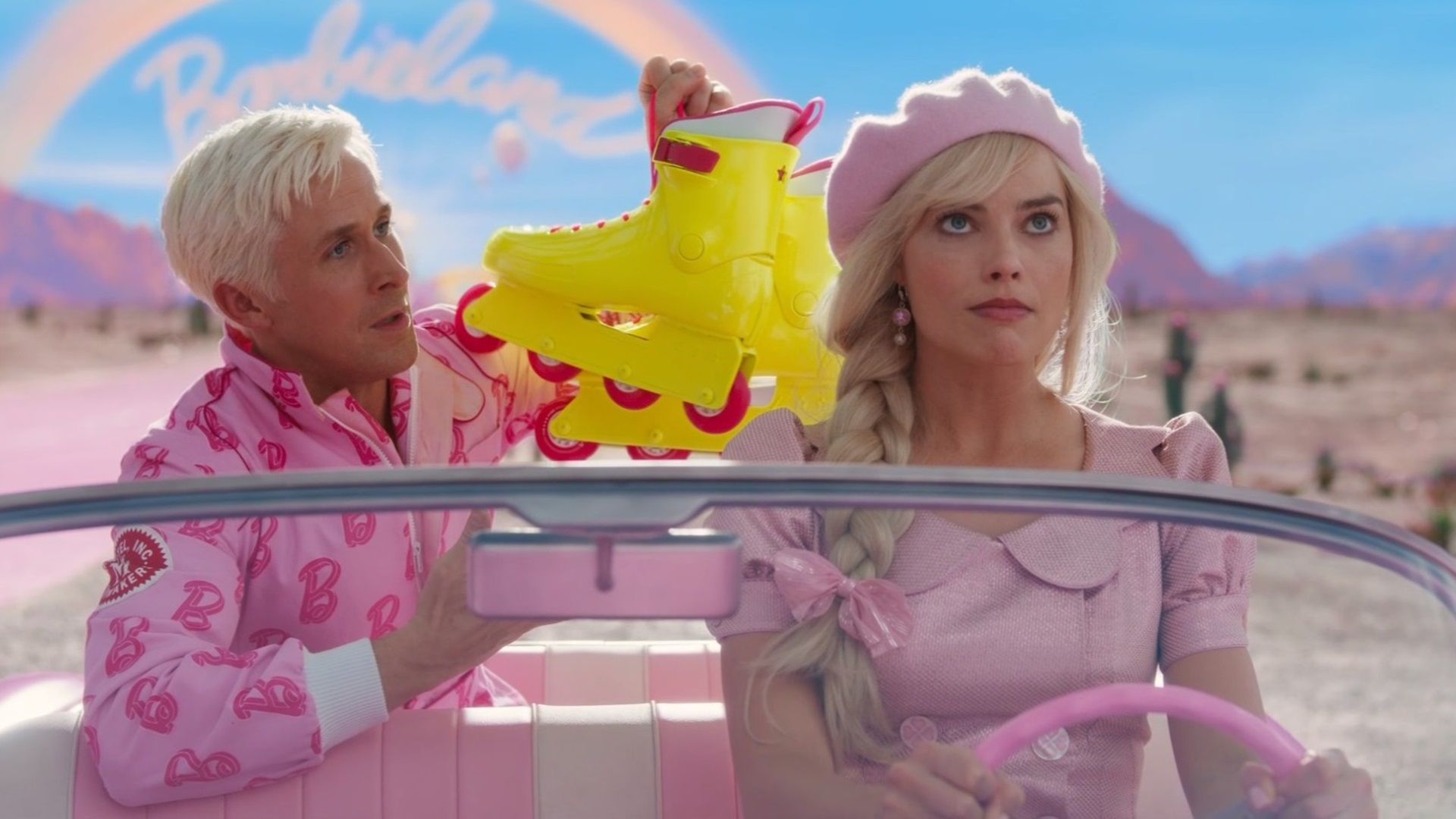
5. Barbie
Ever since Greta Gerwig’s Barbie released to gargantuan success in theaters last summer, I’ve frequently seen the same kinds of criticisms leveled at the film: It’s not that deep; the America Ferrera speech about womanhood was basic; it’s still about a silly doll and an extension of big corporate interest; it’s weird that Ryan Gosling, a man, was somehow the biggest star…
Honestly, I found most of that kind of discourse around Barbie missed the point: This movie was entertaining as hell, but somehow still in a way that respected its audience. A rare blockbuster told entirely from the perspective of women, Barbie has basically everything I want from a summer hit: great jokes, a catchy soundtrack, a well-paced plot, creative and eye-popping set design, movie stars being movie stars (Margot Robbie and Gosling are just incredible), and memorable lines and moments (“She called me a fascist? But I don’t control the railways or the flow of commerce!”). Sure, it’s full of references to toys and the Mattel corporation, but it didn’t quite feel like a glorified advertisement. It was too sharp, too self-assured, and too consistently funny and enjoyable.
If you want to have a serious discussion on the merits of the film’s approach to explaining feminism and womanhood, go for it. In a way, it’s almost a credit to Gerwig and Noah Baumbach’s writing that everyone still has so much to say about Barbie six months after its release. But at the end of the day, the experience of watching Barbie in a theater full of people dressed in pink was a genuine joy, and served as a nice reminder of the power of cinema as a broad monocultural force.
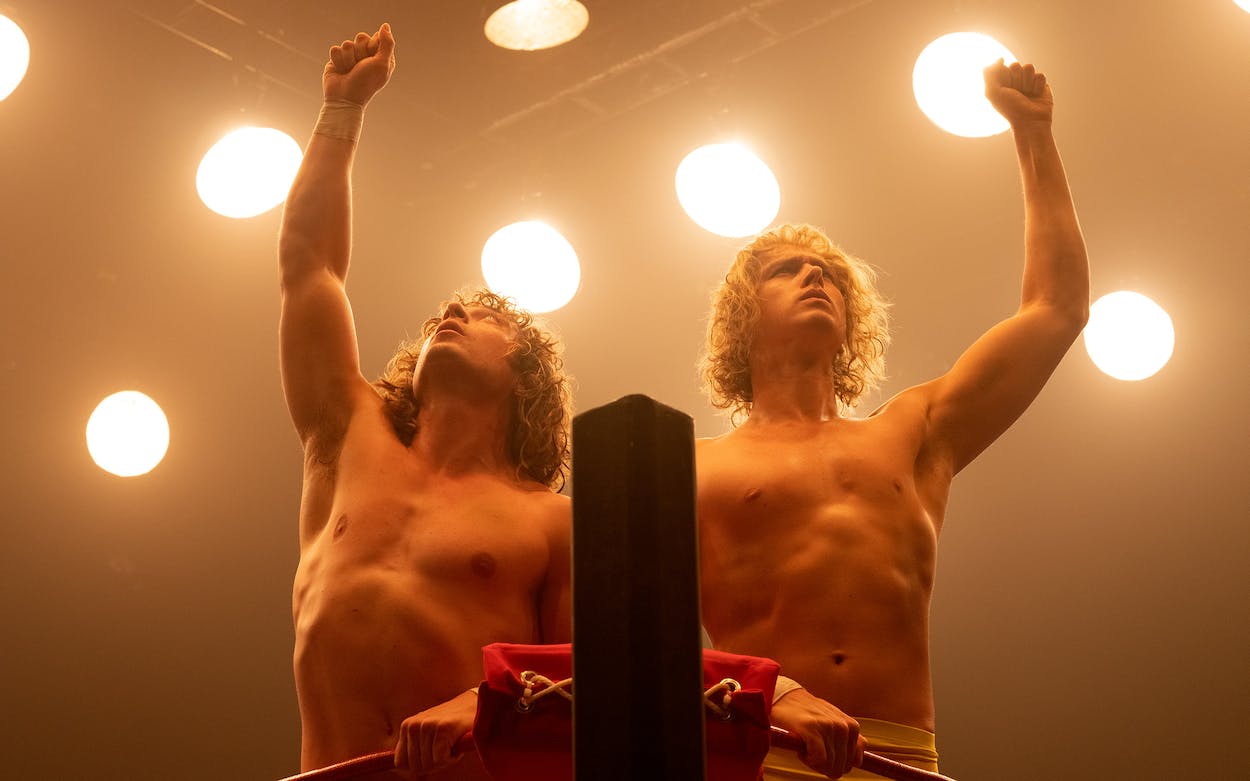
4. The Iron Claw
Sean Durkin’s (somewhat fictionalized) take on the Von Erich family of wrestlers might be the saddest film I saw all year, yet contained some truly beautiful moments. A story of toxic masculinity, supposed family curses, and grappling with familial expectations and responsibilities, The Iron Claw contains traces of the classic sports movie but reminds the audience constantly that this will not be a tale of victory or redemption.
Professional wrestling lives and breathes on performance, showmanship, cartoonish violence, and the appearance of high stakes. The Iron Claw absolutely shows flashes of all these qualities, but many of the actual wrestling scenes focus on the brutality of the sport. More time is spent on the Von Erichs practicing falls, cleaning up blood, recovering from moments of paralysis, and even turning to hard drugs to soften the pain. Even mid-match, you can barely see the audience at all, as the carnage itself takes center stage.
That’s what really hit me about this film: Wrestlers give their all for entertainment and competition, but The Iron Claw shows the pain that comes with it, the toll it can take on a family, and how there’s no way to participate in something as fundamentally violent as pro wrestling and come out unscathed. The real-life Von Erichs suffered unimaginably, and the actual pain of the sport is just one component of it.
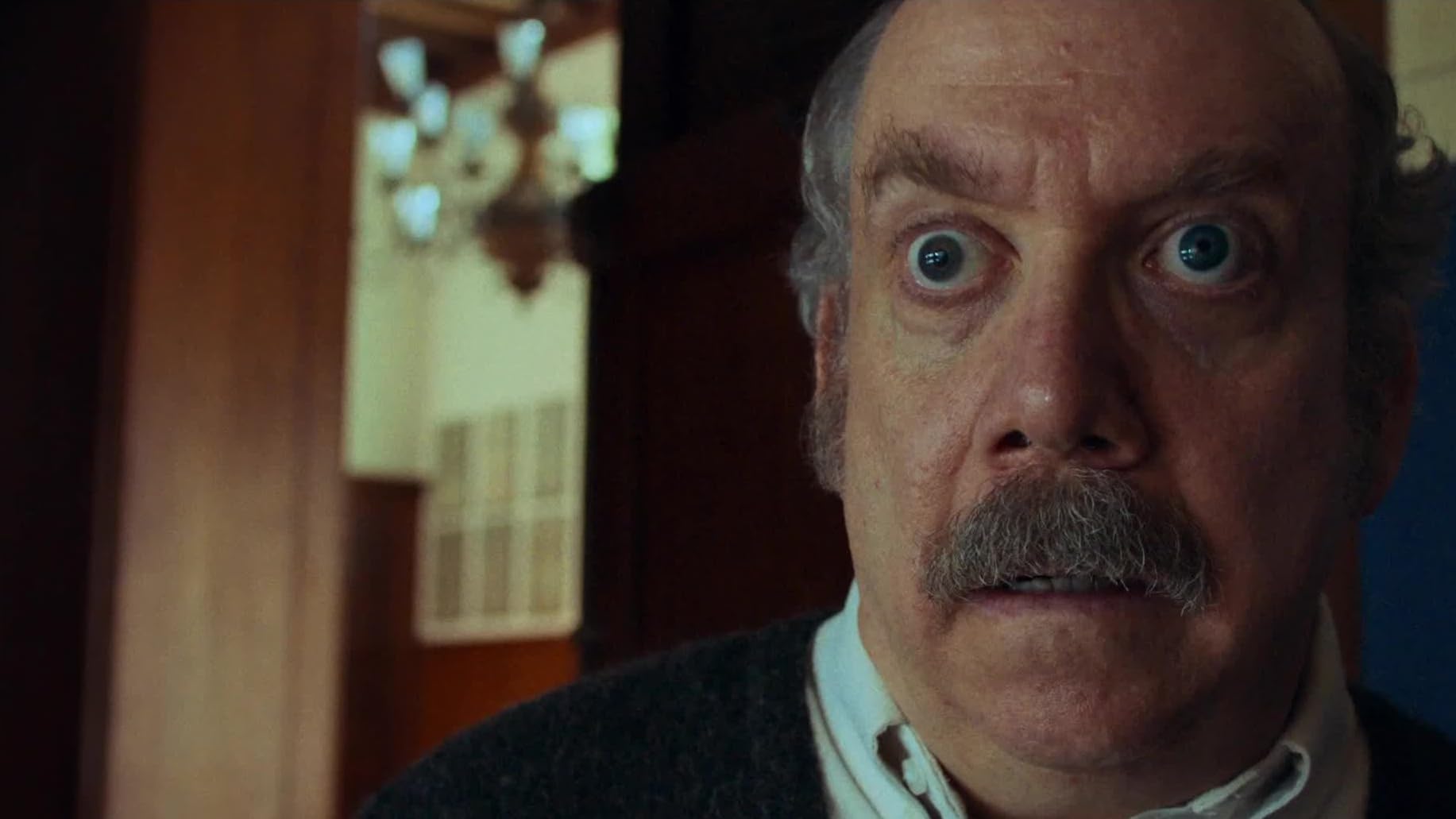
3. The Holdovers
My favorite thing about The Holdovers is that it’s essentially a kind of movie we used to get all the time—a hilarious and heartfelt take on grief and loneliness—yet it still has enough of its own unique flavors to stand out from the pack.
Set in a New England boarding school for boys in December of 1970, the latest from director Alexander Payne depicts a smart but cantankerous young man (played by newcomer Dominic Sessa) grappling with the loss of his father being forced to spend his Christmas vacation at school while his mother goes on vacation with his new stepfather. His chaperones, meanwhile, are his pretentious and demanding teacher (masterfully played by Paul Giamatti) and a lunch lady (the always amazing Da’Vine Joy Randolph) still reeling from the death of her son in the Vietnam War.
While the film has all the elements you’d find in a classic Christmas comedy—ill-timed musical cues, wintry hijinks, unwanted gifts—it also successfully explores each main character’s own struggles with loss and living as victims of unfortunate circumstances. As much as I laughed at all of Giamatti’s excellent line deliveries, Payne’s sharp script, Sessa’s physical comedy, or Randolph’s incredulous facial expressions, I was also touched by each character’s unique pathos and sympathy for one another in equal measure.
Ultimately, The Holdovers is a Christmas movie. It’s a great one at that, and one that showcases how stories around holidays don’t have to reach towards the extremes of saccharin and misery; when properly balanced, they can give us happy and sad moments, the way holidays do in real life.
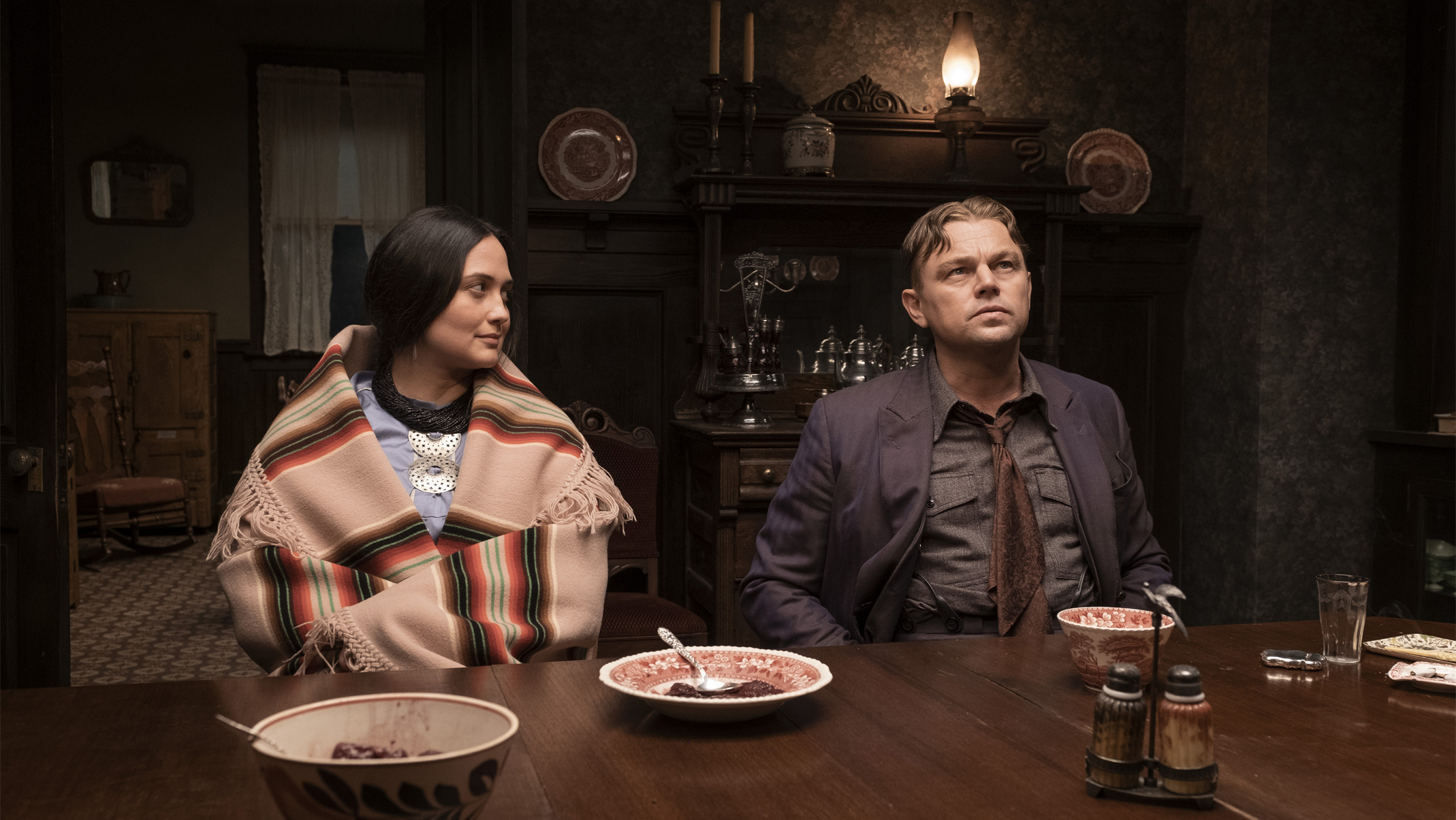
2. Killers of the Flower Moon
Martin Scorsese has been making incredible films for over 50 years, and Killers of the Flower Moon is no exception. With confidence, I can say that this three-and-a-half-hour epic is not just a masterpiece, but among Scorsese’s greatest works.
Based on the book of the same name about the murders of wealthy Osage people in 1920s Oklahoma, the film shifts focus away from the Bureau of Investigation agents who solved the case, but rather on Ernest Burkhart, an idiot who, motivated by immense greed and a total lack of human empathy, aids and abets many of the murders, including the close family members of his own wife.
Unlike some of his earlier mob films, which didn’t excuse or exonerate criminal activity but contextualized and humanized the individuals responsible for such actions, Scorsese pulls no punches with Killers of the Flower Moon. Leonardo DiCaprio never portrays Ernest as anything but a selfish, delusional ignoramus, one who does whatever horrible things his depraved uncle William King Hale (Robert De Niro) says without any internal scrutiny. Meanwhile, the audience constantly sees Ernest’s loving wife Mollie (played by Lily Gladstone, who should 100% win the Oscar for the role) suffer at the hands of every white man she’s ever met (even her own husband, whom she loves dearly), all while seeing her mother and sisters’ corpses pile up.
There’s been some legitimate criticism of Scorsese’s choice to center the story on the white characters instead of the Osage themselves, and I can’t honestly say I completely disagree with that assessment; Hollywood movies, even when firmly sitting on the right side of history, tend to favor the perspectives of the majority. That said, Killers of the Flower Moon hammers home the notion that America’s cruelty toward this land’s indigenous peoples could only happen if the colonizers themselves saw them as less than human, and completely undeserving of anything nice.

1. Oppenheimer
Oppenheimer shook me to my core. What I thought could have potentially been a whitewashed biopic or pretentious, simplistic take on warfare was so much more: It was a meditation on the fragility of humankind, its propensity toward destruction, and how every major scientific discovery can (and likely will) be used to accelerate that destruction. Moreover, it excoriates the very notion of political neutrality, depicting the titular scientist himself as an insecure man riddled with contradictions, incapable of taking a firm stance on anything, and unable to separate his legacy as a theoretical physicist from his most monstrous creation, no matter how hard he tried.
Prior to the release of what should be remembered as his Magnum Opus, director Christopher Nolan described J. Robert Oppenheimer as “the most important person who ever lived.” At first, I just thought Nolan was attempting to create hype, as he is wont to do. Yet after seeing Oppenheimer myself, I fully understood what Nolan meant: The creation and deployment of the atomic bomb fundamentally altered the trajectory of human existence, as the callousness associated with dropping the bomb means that nothing is off the table when it comes to mass killing.
The obliteration of Hiroshima and Nagasaki proved that we are all seconds away from demise, and we won’t even be granted the dignity of seeing our killers’ faces before it happens. And even though we haven’t seen an A-bomb dropped since World War II, the threat remains, warfare continues, and the distance between who makes the call and who gets hurt keeps widening.
Oppenheimer excels in so many ways: incredible performances, super-sharp pacing (the film was three hours long but it could have been five and I wouldn’t have complained), masterful camerawork and sound editing, and a screenplay full of lines I’ll never forget. Where it soars to masterpiece status is how it sticks the landing with its aforementioned themes. It’s not just a film about the people who created such a formidable weapon; it’s about what it means for all of us that such a thing exists in the first place, even if people convinced themselves at one point that its existence was necessary.
Sam has been playing video games since his earliest years and has been writing about them since 2016. He’s a big fan of Nintendo games and complaining about The Last of Us Part II. You either agree wholeheartedly with his opinions or despise them. There is no in between.
A lifelong New Yorker, Sam views gaming as far more than a silly little pastime, and hopes though critical analysis and in-depth reviews to better understand the medium's artistic merit.
Twitter: @sam_martinelli.


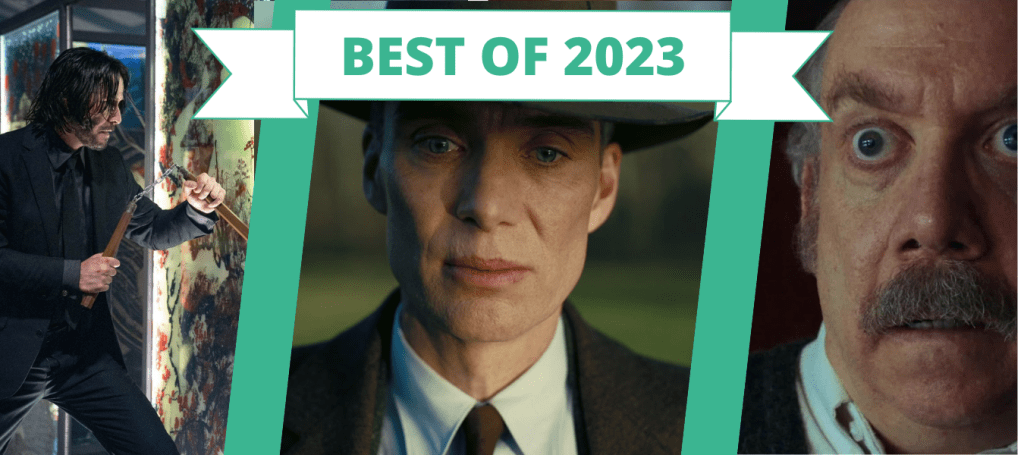





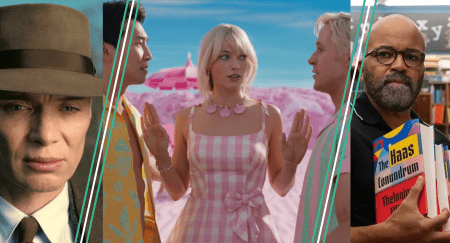

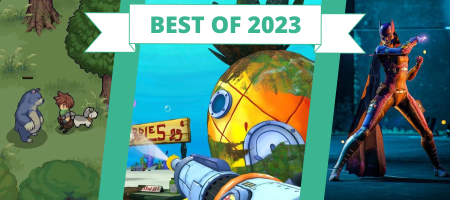
1 Comment
Excellent!! Most perceptive reviews I’ve ever read.